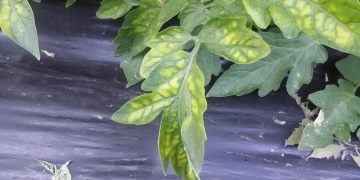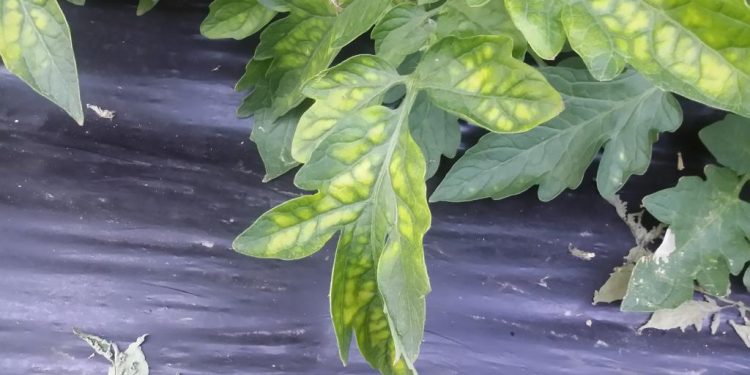Criniviruses emerged as a major problem for world agriculture at the end of the twentieth century with the establishment of some of their whitefly vectors in temperate climate.
There are no estimates of yield losses, although since ToСV discovery, the virus represents a serious problem for tomato production in many parts of the world . ToCV is very important in tomatoes, in peppers and potatoes . New cases of virus detection on these crops in new regions are noted every year. Outbreaks in tomato fields in Málaga and Almería provinces in Southern Spain in 1998 and 1999 were associated with high populations of B. tabaci and were described as epidemics. Incidences of over 30% symptomatic plants in individual fields were frequent . Hanafi (2002) reports that ToCV caused significant damage in tomato glasshouses in Spain. The severity of symptoms and damage vary according to the cultivar. It is known that with a mixed virus infection ToCV and Tomato spotted wilt virus (TSWV) synergism is observed, that leads to the rapid death of plants .
As with other virus diseases, once a plant is infected with a virus there is no cure, and measures should be taken to eradicate sources of inoculum and eliminate the presence of vectors to minimise the risk of further transmission therefore, control of whitefly vectors is key.
Regarding chemical control, B. tabaci appears to develop resistance to all groups of insecticides. A rotation of insecticides that offer no cross resistance must therefore be used to control B. tabaci infestations. The biocontrol agent Encarsia formosa (parasitic wasp) is used to control T. vaporariorum, but it is less efficient against B. tabaci. Repeated releases of large numbers of E. formosa against B. tabaci are necessary if eradication is required. The predatory beetle Delphastus pusillus is very effective against B. tabaci. Roguing of severely infested plants reduces whitefly populations.
Using containment structures, for example adding nets to the greenhouse ventilation windows limiting the access of the whitefly vectors to the plants, results in an efficient protection of the crop from ToCV infection .
Tomato seedlings for transplanting should be kept free from infection. There are no resistant tomato cultivars as no resistance to ToCV has yet been identified in tomato. No differences in the incidence of yellowing due to ToCV in fields containing different cultivars of tomato were observed in southern Spain (Navas-Castillo et al., 2000).
Eradication of isolated outbreaks in glasshouse-grown tomatoes can probably be achieved by destruction of affected hosts and of the vector(s). However, it is difficult to envisage that eradication could be achieved for outbreaks in the field in Southern Europe. Weed hosts may act as reservoirs for ToCV.
Reference: EPPO (2024) Crinivirus tomatichlorosis. EPPO datasheets on pests recommended for regulation. https://gd.eppo.int (accessed 2024-07-10)































